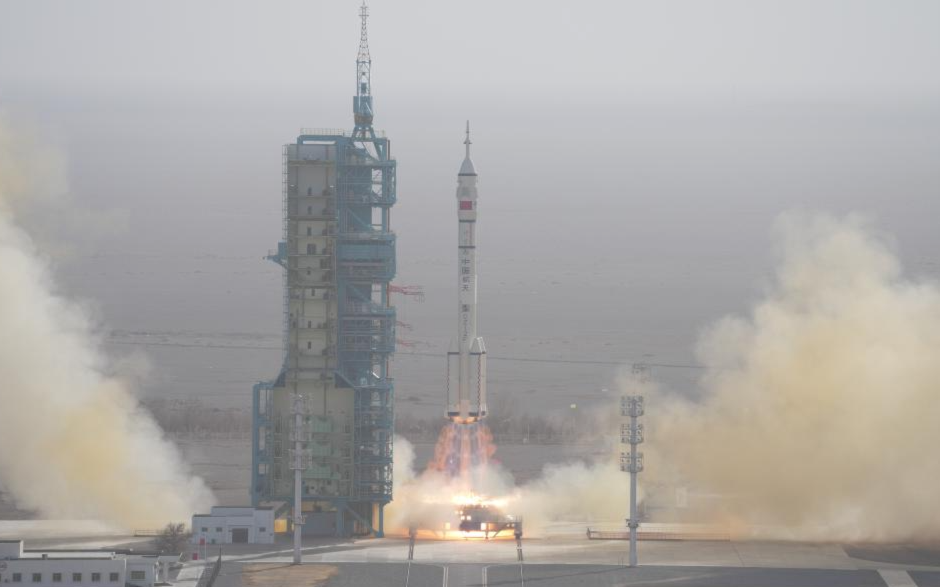China launches Shenzhou-22 in first-ever emergency mission
China launches the Shenzhou-22 spacecraft in its first emergency mission, following debris damage to the Shenzhou-20 return capsule.
-

China launches the Shenzhou-22 spaceship from the Jiuquan Satellite Launch Center in northwest China on November 25, 2025 (Xinhua News Agency)
China has successfully launched the Shenzhou-22 spacecraft in what authorities described as the country’s first emergency mission under its rapidly advancing crewed space program.
The Long March-2F rocket lifted off at 12:11 pm (Beijing time) on Tuesday from the Jiuquan Satellite Launch Center in northwest China, sending the unmanned spacecraft into orbit minutes later.
The China Manned Space Agency (CMSA) confirmed that Shenzhou-22 had separated from its carrier rocket and entered its designated orbit, declaring the mission a complete success.
Emergency launch triggered by debris strike
The accelerated launch was ordered after a suspected space-debris impact damaged the return capsule of the Shenzhou-20 mission, creating fine cracks near one of its windows. CMSA engineers conducted extensive photo analysis, simulations, wind tunnel tests, and design reviews before determining that the capsule could not safely complete re-entry.
Originally scheduled to return on November 5, the Shenzhou-20 crew, Chen Dong, Chen Zhongrui, and Wang Jie, were forced to remain in orbit until Shenzhou-21 could bring them home. They landed safely on November 14 at Dongfeng, nine days later than planned.
The damage also left the Shenzhou-21 astronauts, Zhang Lu, Wu Fei, and Zhang Hongzhang, temporarily without a reliable return vehicle. Tuesday’s launch provides the trio with a safe backup capsule as they continue their mission aboard the Tiangong space station.
Read more: China urges US to stop space threat rhetoric
Supplies, repair equipment, a fast docking sequence
Shenzhou-22 carries vital supplies for the space station, including food, medical materials, fresh produce, and replacement components. It also includes specialized equipment designed specifically to address the window crack on the Shenzhou-20 return capsule.
The spacecraft is scheduled to perform a rapid, automated rendezvous and docking sequence with Tiangong, reinforcing China’s growing proficiency in emergency orbital operations.
The launch is China's 38th mission under the crewed spaceflight program and the 610th flight of the Long March rocket family. Additionally, the mission is the first real-world demonstration of China's emergency launch capability.
Beijing has long operated a “one launch, one backup” strategy, keeping a fully fueled spacecraft on standby during every crewed mission. When Shenzhou-21 launched earlier this year, Shenzhou-22 and its rocket were already positioned at Jiuquan for contingency use.
China is the third country in history to send humans into orbit and has built the Tiangong space station after being barred from the United States-led International Space Station in 2011. Beijing has since expanded international cooperation and, in February, signed an agreement with Pakistan to recruit the first foreign taikonauts for future missions.
Read more: China to land astronauts on Moon by 2030

 3 Min Read
3 Min Read








